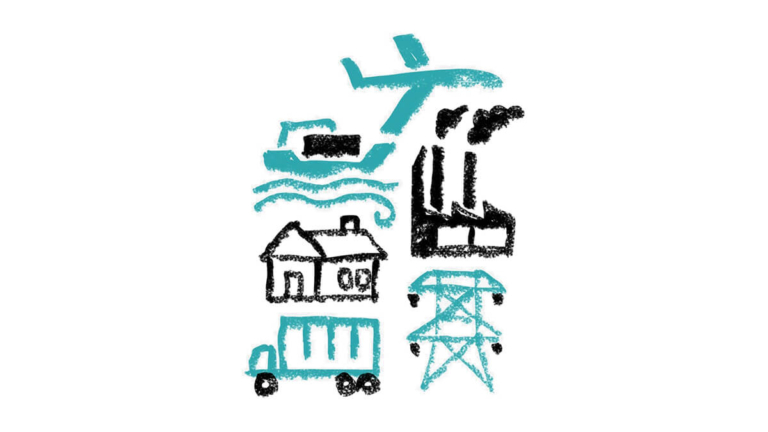Casebook Info
| In a landmark decision, the European Court of Human Rights became the first international court to recognize that governments have a human rights obligation to take action on climate change. This includes an obligation to take immediate action on reducing greenhouse gas emissions, as well as an obligation to help vulnerable groups adapt to climate change. |
- Year Filed 2016
- Year of Most Recent Ruling 2024
- Year of Final Ruling 2024
- Jurisdiction European Court of Human Rights
- Court Name European Court of Human Rights
- Primary Focus Mitigation
- Ruling On Merits
- Plaintiff(s) Senior Swiss Women for Climate Protection (KlimaSeniorinnen Schweiz)
- Respondent(s) Switzerland
- Outcome Granted
- Organizational leader of the litigation KlimaSeniorinnen Schweiz
- Link to the decision/ruling
Background
In 2016, the KlimaSeniorinnen Schweiz (or Senior Swiss Women for Climate Protection) and four of its individual members, sued the Swiss government for failing to sufficiently mitigate greenhouse gas (GHG) emissions. They argued that the government had failed to meet its constitutional and human rights obligations by allowing emissions that were inconsistent with the temperature goals in the Paris Agreement. Specifically, the plaintiffs argued that failing to mitigate emissions violated their rights to life and respect for their private and family life.
As the name suggests, the KlimaSeniorinnen Schweiz is an association of older women committed to climate advocacy. All of their members are women 64 years or older living in Switzerland. When they filed their case, the association only had around 40 members. This small, but committed, group of women were on course to shape not only Swiss law, but European and international law as well.
The association asserted that they and their members have a unique interest in climate protection because older women are particularly at risk from heatwaves and extreme heat. The four individual applicants each described how they had been impacted by extreme heat. For example, Applicant 2 described collapsing from the heat on multiple occasions, Applicant 3 described experiencing breathing and cardiovascular problems during heatwaves, and Applicant 4 described how heatwaves exacerbate her asthma. Several of them provided medical certificates that supported their accounts.
Rejected by the Swiss Courts
In their complaint, the plaintiffs asked four agencies— the Federal Department of the Environment, Transport, Energy and Communications (“DETEC”), the Federal Office for the Environment (“FOEN”), and the Federal Office for Energy — to take sufficiently aggressive action to mitigate GHG emissions. They argued that keeping global warming below 2° C required a plan to reduce emissions by at least 25% below 1990 levels by 2020. This target was a reference to the goal in the Paris Agreement of keeping global temperature increases to “well-below” 2° C.
DETEC subsequently rejected the plaintiff’s request on the grounds that the plaintiffs did not have standing. DETEC reasoned that the government’s alleged conduct (i.e., not sufficiently reducing emissions) did not have an effect on rights or obligations. The plaintiffs sought general regulations and a reduction of worldwide GHG reductions, such that their claims were not based on individual rights violations.
On appeal, the Federal Administrative Court affirmed DETEC’s findings. The court held that “the appellants are not affected by [Switzerland’s] climate protection measures in a way that goes beyond that of the general public” (¶9, see translated version here). The court explained that Switzerland’s Administrative Procedure Act excludes public interest actions (actio popularis), which means that plaintiffs must suffer a special injury, beyond the general injury to the public. The court took the view that climate change impacts different groups in different ways: during heatwaves, children are at risk of dehydration and urban dwellers face greater health risks due to the urban heat island effect (¶7.4.2). As a result, the plaintiffs were not more affected by climate change than populations and thus they did not have a specific, individual interest in the action.
The plaintiffs appealed to the Federal Supreme Court, but the court affirmed the administrative court’s decision. The court explained that the world was not expected to reach the limit for 2° C of warming in the near future, so the plaintiffs’ rights were not affected with “sufficient intensity” (¶5.4, see translated version here). Accordingly, the case was a public interest action because the plaintiffs’ did not have the aim of ensuring their individual legal protection (¶5.5).
Throughout each of these decisions, the courts never reached the merits of the plaintiffs’ claims. They simply determined that procedural law barred the plaintiffs from even bringing the case in the first place.
A Landmark Human Rights Decision
Having exhausted their legal remedies in Switzerland, the plaintiffs filed an application with the European Court of Human Rights (ECtHR) asking the court to consider the case. In addition to the claims they raised in Switzerland, the plaintiffs also asserted that the Swiss courts had violated their right to a fair trial under Article 6 of the European Convention on Human Rights (ECHR) by arbitrarily rejecting their case.
The court accepted eight interventions from European governments and 15 third-party interventions from civil society. CLX, joined by Professor Voigt and the NYU Law Global Justice Clinic, submitted one of these interventions in support of the plaintiffs’ application. The submission argued that older women (and an NGO representing their interests) can be considered direct and potential victims under Article 34 of the ECHR, considering their vulnerability to ongoing climate impacts. The mere fact that climate change impacts a large segment of society should not undermine the plaintiffs’ victim status. In addition, the submission urged the court to interpret state obligations under the ECHR in the light of the provisions and commitments under the Paris Agreement.
On April 9, 2024, the ECtHR made international history by ruling in favor of the plaintiffs. The court held that Switzerland had violated the plaintiffs’ right to respect for private and family life (Article 8 of the ECHR) and their right to access the court (Article 6 § 1 of the ECHR). In doing so, the court became the first international court to rule that state inaction on climate change violates human rights.
In reaching this decision, the court underscored the growing alarm over climate change and the need to reduce emissions. The court described how the world needs to meet its carbon budget in order to meet the temperature goals set out in the Paris Agreement. According to the Intergovernmental Panel on Climate Change (IPCC), meeting these temperature goals requires near-term, urgent emissions reductions (¶118). However, the court observed that total net GHG emissions were higher between 2010 and 2019 than any previous decade (¶111). For its part, Switzerland acknowledged that it had not met its 2020 target for emissions reductions. The court also noted that Switzerland had not translated its Nationally Determined Contribution into domestic law, carried out an analysis of its carbon budget, or adopted measures that would allow it to meet its 2030 target.
The court also described the plaintiffs’ risk from climate change. Citing the Intergovernmental Panel on Climate Change (IPCC) and attribution science submitted by the plaintiffs’, the court noted that “increasing temperatures and heatwaves increased mortality which could be attributed to human-induced climate change” (¶65). Global heat-induced morality in people over 65 increased by approximately 68% over the past two decades, with older women making up a disproportionate share of these deaths (¶65). “In August 2018, nearly 90% of heat-related deaths [in Switzerland] had occurred in older women, almost all of whom were older than 75” (¶74).
Drawing on these facts, the court reasoned that the complexity of climate change requires a flexible application of standing rules. To demonstrate victim status under the ECHR, a plaintiff needs to show that they are impacted by the environmental damage or risk that they complain of. This means that a plaintiff must show that they were “personally and directly affected” by the government’s failure to take action; in other words, they must face a high exposure to the adverse effects of climate change (¶487). In this case, the court found that the plaintiff association has victim status because scientific findings show that older women are particularly vulnerable to the effects of climate change (¶529-530). In this way, the court affirmed the arguments CLX made in its intervention. However, the court held that the individual applicants did not have victim status because it wasn’t possible to establish their particular risk from climate change.
The court then proceeded to the merits of the plaintiffs’ claims. It first noted that climate change and environmental degradation are capable of having “serious, potentially irreversible adverse effects on the enjoyment of human rights” (¶431). The court acknowledged that climate change is a global phenomenon that needs to be addressed on the global level, but through the UNFCCC and Paris Agreement, states established an international regime that places responsibilities on national governments. Thus, the court explained, “each state has its own share of responsibilities to take measures to tackle climate change and . . . the taking of those measures is determined by the State’s own capabilities rather than by any specific action (or omission) of any other State” (¶442). The question is not whether Switzerland caused climate change, but whether “reasonable measures . . . could have had a real prospect of altering the outcome or mitigating the harm” (¶444). In this way, the court adapted the strict ‘but-for’ causation standard to the special context of climate change (¶440).
The court held that states have a positive obligation to take steps to prevent the harms caused by climate change, thereby doing their part to ensure the protection of rights. Further GHG emissions may exacerbate climate change to the point of interfering with human rights, in particular the right to private and family life. In the court’s view, the right to private and family life “must be seen as encompassing a right for individuals to effective protection by the State authorities from serious adverse effects of climate change on their life, health, well-being and quality of life” (¶519).
To meet their obligation, states must take measures to substantially and progressively reduce emissions, working toward an aim of net zero emissions within the next three decades (¶548). For this to be “genuinely feasible” and “to avoid a disproportionate burden on future generations,” authorities must take immediate, effective, and consistent action (¶549). This language suggests that states have a positive obligation to protect future generations from the impacts of climate change.
The court also laid out standards for evaluating whether a state is complying with its human rights obligations by taking action on climate change. States should* show that they have considered their carbon budget, put together a feasible plan, and implemented that plan in a timely manner (¶550). Notably, the court also instructed states to “keep the relevant GHG reduction targets updated with due diligence, and based on the best available evidence” (¶550). This is significant because it ties government’s human rights obligations to a scientific standard, as is discussed in the Takeaways section below. The court also recognized that governments have a positive obligation to implement adaptation measures “aimed at alleviating the most severe or imminent consequences of climate change, taking into account any relevant particular needs for protection” (¶552).
On the basis of this reasoning, the court concluded that Switzerland had violated its positive obligations. The court noted that Switzerland’s promises to act on climate change were not sufficient to meet its obligations (¶567). Switzerland had failed to quantify its national GHG limitations, meet its past GHG reduction targets, set medium- and long-range targets, and implement a “relevant legislative and administrative framework” (¶¶558-573).
Additionally, the ECtHR concluded that Switzerland had violated the plaintiffs’ right to access the courts. The court emphasized that courts have an important role to play in addressing climate change (¶639). Courts must uphold the rule of law and enforce minimum obligations, even if this runs against the will of the majority (¶412). This may be particularly true when democratic processes fail to protect the interests of future generations (¶420). Claims based on climate change cannot be automatically considered public interest actions “or as involving a political issue which the courts should not engage with” (¶634). In this case, the Swiss courts did not address the association’s standing and “did not engage seriously or at all with the action brought by the applicant association” (¶636).
It is worth noting that 16 out of 17 judges joined the majority opinion. This near-unanimous agreement was “an unusual display of solidarity for [the ECtHR].” Judge Eicke issued a partial dissent, differing with the majority on the court’s role in addressing climate change “at this point in time” (Partial Dissent, ¶5). Judge Eicke otherwise affirmed climate science, the critical danger of climate change, and the urgent need for adequate government action.
* Technically, the court stated that governments should give “due regard to the need to” take the actions laid out by the court (¶550). The court’s language suggests that the court will holistically assess a government’s actions rather than substitute its judgement of necessary action for the government’s. As a practical matter, governments will likely need to show that their actions are comparable to the court’s proposed actions. For example, a government will not need to consider its carbon budget if it sets sufficiently ambitious emissions reduction targets. The court appears to have assessed Switzerland’s actions according to this standard.
Monitoring Compliance
Following the ruling, the government of Switzerland expressed skepticism over the reach of the ECtHR’s opinion and suggested it was doing enough, in light of a climate law implemented at the beginning of 2025, to protect its citizens from the harmful effects of climate change. Put differently, Switzerland demonstrated little intent to take the Court’s ruling seriously and translate its judicial mandate into direct action.
But in early March 2025, the Committee of Ministers of the Council of Europe – “the first intergovernmental body to oversee a State’s compliance with a legal decision on climate change” – declared that Switzerland was not yet in compliance with the ECtHR’s 2024 KlimaSeniorinnen judgment. The Committee reminded Switzerland of its obligations as identified by the ECtHR and requested that the State, among other things: (i) provide further information on measures to implement a draft CO2 ordinance; (ii) demonstrate “that the methodology used to devise, develop and implement the relevant legislative and administrative framework responds to the Convention requirements as detailed by the Court and relies on a quantification, through a carbon budget or otherwise, of national greenhouse gas emissions limitations” (¶5); (iii) update the Committee on progress to implement concrete adaptation measures, particularly in defense of vulnerable groups (¶6); and (iv) demonstrate the concrete efficacy of climate change-related procedural safeguards (¶7).
It remains to be seen whether Switzerland will heed the requests of the Committee of Ministers, but the Committee’s investigation nonetheless demonstrates the critical value of continued pressure on governments to comply with climate change-related judicial rulings. The Committee will meet again to discuss Switzerland’s compliance status at their 1537th meeting in September, 2025.
- 46 Countries are bound by the court’s precedent
- ~61,672 people died from heat exposure in Europe during the summer of 2022 (Ballester et al. 2023)
- 60% of the heat-related deaths in Switzerland during the summer of 2022 can be attributed to anthropogenic climate change (Vicedo-Cabrera et al. 2023)
Strategies
Providing an inclusive definition of the greenhouse gas emissions for which countries / corporations are responsible

Notably, the court held that states are responsible for emissions that stem from its imported products (known as “scope 3” emissions), even if those emissions are released outside the country. The court explained that:
‘In a globalised economy, both the GHG emitted in Switzerland and those emitted abroad as a result of Swiss final demand must be recorded (total final consumption expenditure of households and the public sector). A large part of Switzerland’s footprint is created abroad because imports make up a high proportion of the country’s total consumption.’ It would therefore be difficult, if not impossible, to discuss Switzerland’s responsibility for the effects of its GHG emissions on the applicants’ rights without taking into account the emissions generated through the import of goods and their consumption.
(¶¶279-80, quoting FOEN “Climate Change in Switzerland” (2020))
Tying countries’ / corporations’ climate and human rights obligations to international climate and environmental law, including, for example, the temperature target established by the Paris Agreement

The court pegged states’ human rights obligations to the temperature goals set out in the Paris Agreement. In this way, the court affirmed that crossing these temperature thresholds would violate people’s rights by causing substantial death, destruction, and displacement.
Using a carbon budget

The court’s judgement is notable for its emphasis on using a carbon budget. The court used carbon budget analysis to measure the need for mitigating emissions. The court also took the step of requiring states to evaluate their own carbon budget when setting emissions reduction targets. The ruling further implies that reduction targets should be tethered to the global carbon budget. However, the court indicated that a government may still meet its human rights obligations if it uses a comparable, similarly effective method of calculating emissions targets.
Takeaways
It is well-established that human rights obligations require states to reduce GHG emissions. This case affirms the emerging consensus that states have a human rights obligation to take action on climate change, particularly by reducing emissions. The ECtHR is not the first court to articulate this view; in fact, the court referenced several domestic court decisions that arrived at this conclusion. However, the court’s decision strengthens this understanding and establishes it on an international level. This will make it more difficult for governments to argue that mitigation policy has no bearing on rights.
Groups may have an easier time establishing standing, as compared to individuals. The ruling indicates that organizations may be best positioned to prove standing in climate change cases. Organizations represent collective, or aggregate, interests, which aligns well with scientific evidence on climate change risks and impacts. Scientists generally use aggregate data to attribute observed phenomena to climate change. For example, the plaintiffs cited an attribution study that estimated climate change-induced heat mortality using mortality data from 732 locations across 43 countries (Vicedo-Cabrera et al., 2021, cited by the court at ¶65). This study establishes a climate impact at the societal level, but it does not prove that any particular individual’s death was caused by climate change. In other words, the statistical analysis methods used in attribution science make it easier to draw conclusions about group-level risks than individual-level risks.
The court confidently found that climate change poses a risk to older women as a group, which justifies standing for an association representing their collective interests. Notably, the court observed that KlimaSeniorinnen Schweiz also acts in the interests of future generations (¶521), who are most clearly placed at risk by failure to mitigate emissions. However, it is worth noting that the court’s language seems to preclude standing for environmental organizations (¶502).
In contrast to this analysis for organizations, the court was not persuaded that the individual applicants had experienced injuries from climate change or faced a particular risk from climate change. The court laid out several factors that may indicate that an individual faces significant exposure to climate risks (¶488). These factors essentially boil down to whether the individual has experienced a substantial harm that is attributable to climate change or faces a sufficiently concrete and substantial risk that is attributable to climate change. While the applicants had submitted medical records showing health impacts from exposure to extreme heat, these impacts could not be confidently attributed to climate change.
Science must dictate mitigation and adaptation policy, not politics. The court held that governments must base their GHG reduction targets and adaptation policy on the “best available evidence.” This language suggests that science will play a key role in determining whether a government has taken sufficient action on climate change. This complements the Paris Agreement, which allows governments to set emissions reduction targets that are incompatible with the Agreement’s temperature goals. The court’s holding adds teeth to the Paris Agreement by requiring states to set reduction targets that could, according to the best available science, keep global warming below 1.5° C. In effect, the court is requiring substance, not just form.
Last, KlimaSeniorinnen v. Switzerland demonstrates that, oftentimes, it’s not enough to win a case. As the recent decision by the Committee of Ministers of the Council of Europe shows, governmental climate action and compliance with climate rulings demand continuous scrutiny from intergovernmental bodies, civil society actors, and the public.
Impacts
This case will have a substantial impact on the development of climate law. The court’s decision sets binding precedent for all 46 states that are party to the ECHR. As a result, observers expect “to see a rash of lawsuits in other European countries, because most of them done the same thing [in terms of action on climate change].” This decision will increase the pressure on European countries to take substantial and meaningful action on climate change. In particular, Switzerland is now obligated to aggressively reduce GHG emissions. Observers also believe that Switzerland will comply with the court’s order, since it wants to be “seen as doing the right thing.”
The court’s thorough assessment of climate science and law will also likely serve as a model for other courts considering state and corporate obligations on climate change (Hoffman, 2024). The decision may influence other international courts, such as the International Court of Justice and the Inter-American Court of Human Rights, which are also considering cases on climate change and human rights. Reasoning aside, other international courts may feel compelled to reach similar conclusions regarding the rights implications of climate change, lest they appear irrelevant in the face of today’s crises.
The court’s decision may also spur government action on adaptation and loss and damage. The ruling requires states to take action to protect vulnerable groups from the adverse impacts of climate change. This will likely encourage litigants to sue their governments for failing to assist them with adapting to climate change. Litigants may be compensated for loss and damage that could have been avoided by effective government action on adaptation. The court’s recognition of past and ongoing loss and damage, and its impact on individual rights, lays a solid foundation for claims seeking reparations. The court’s reasoning suggests that plaintiffs could recover damages for climate change impacts if they are able to provide strong evidence that those damages were caused by climate change. So far, there have been relatively few rights-based adaptation or loss and damage cases.
Predictably, the court’s decision has also been met with criticism. Some believe that the court “intrud[ed] into national politics,” thereby undermining its legitimacy. They have called on states to withdraw from the ECHR, though this does not seem likely at present.
